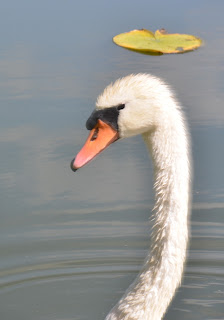The LAKES of MONTICCHIO
(Basilicata)
A step away from Puglia, in search of refreshment from a hot summer ...
HELLO, I'm Beatrice ...
Giusy is momentarily in relax and asked me if I can be testimonial for the places where I live.
I accepted to be your guide in this ... paradise on earth.
So I explain you that .....
The LAKES OF MONTICCHIO are also called "the twins of the Vulture". They are real the natural jewels of the Basilicata.
They are situated on the Monte Vulture, an ancient extinct volcano now covered by dense vegetation of beech, chestnut, ash, and other varieties of trees; they take up twice the central crater of the volcano, 600 meters above sea level.
The "Great Lake" (0.4 square kilometers) and the "small lake" (0.1 square kilometers) have semicircular shape and are separated by a strip of land of 215 meters, but they communicate with each other through a culvert.
They are situated on the Monte Vulture, an ancient extinct volcano now covered by dense vegetation of beech, chestnut, ash, and other varieties of trees; they take up twice the central crater of the volcano, 600 meters above sea level.
The "Great Lake" (0.4 square kilometers) and the "small lake" (0.1 square kilometers) have semicircular shape and are separated by a strip of land of 215 meters, but they communicate with each other through a culvert.
In this regard, let me tell a little story ...: an happy day in 1963 an entomologist named Friedrich Hartig came here and discovered the existence of a rare butterfly called European Bramea.
It 'a kind of living fossil that is only found in Asia.
This is why this area has been established Regional Reserve.
 Stories of men ...
Stories of men ...
Among the various stories that are told in our beautiful woods, my ancestors swans have passed down to me the most ancient hunting exploits of Frederick II with his falcons, and, more recently, the memory of gunshots weapons of brigands.
We can still remember a certain Carmine Donatelli, said "Crocco," which, with his band of loyalists Bourbon, fought against the Piedmontese, immediately after the Unification of Italy.
and their monumental works ...
Walking around the small lake, look up! You'll notice at the top a beautiful abbey that stands white between the dense vegetation. It's the Abbey of S. Michele.
It was founded before the eleventh century by the Benedictine monks around a Basilian cave . The Benedictines remained there until 1456, when the area was devastated by a terrible earthquake that brought destruction there. Followed the Capuchins who also founded a library and a woolen mill.
Towards the end of 500 it was already in decline, but it came under the commendatory of Cardinal Borromeo, who, on the advice of his preceptor Filippo Neri, made her "rebirth".
Later took seat (up to 1866) the Military Constantinian Order.
Towards the end of 500 it was already in decline, but it came under the commendatory of Cardinal Borromeo, who, on the advice of his preceptor Filippo Neri, made her "rebirth".
Later took seat (up to 1866) the Military Constantinian Order.
The monastery is on several floors, and includes an eighteenth-century Church and the Chapel of St. Michele.
The cave of the Angel, in fact dedicated to St. Michele, is adorned with frescoes of the mid-eleventh century: gathered here in prayer the Italian-Greek monks who once inhabited the area.
The cave of the Angel, in fact dedicated to St. Michele, is adorned with frescoes of the mid-eleventh century: gathered here in prayer the Italian-Greek monks who once inhabited the area.
In the Abbey lies the Museum of Natural History of the Vulture.
In it we find, in a multimedia context, flora and fauna of the area (there is also a small aquarium). In particular, there is an interesting room with exposed butterflies and beetles ...
I prefer them alive! Strange ideas of man ... for the purposes of the study and knowledge!
In another room there are two specimens, a male and a female of the rare Bramea of which I have already spoken...
In it we find, in a multimedia context, flora and fauna of the area (there is also a small aquarium). In particular, there is an interesting room with exposed butterflies and beetles ...
I prefer them alive! Strange ideas of man ... for the purposes of the study and knowledge!
In another room there are two specimens, a male and a female of the rare Bramea of which I have already spoken...
Continuing on the path between the two lakes we meet the ruins of the Abbey of S. Ippolito: it was built between the eleventh and twelfth century by the Basilian. With the arrival of the Normans the Basilian went away, giving way to the Benedictines, who turned it into a Benedictine Abbey.
It was destroyed by the earthquake of 1456 already mentioned, so the religious were forced to abandon it.
Today, little is left, you can only see a few pillars and apses.
...and the majestic woods.















Nessun commento:
Posta un commento